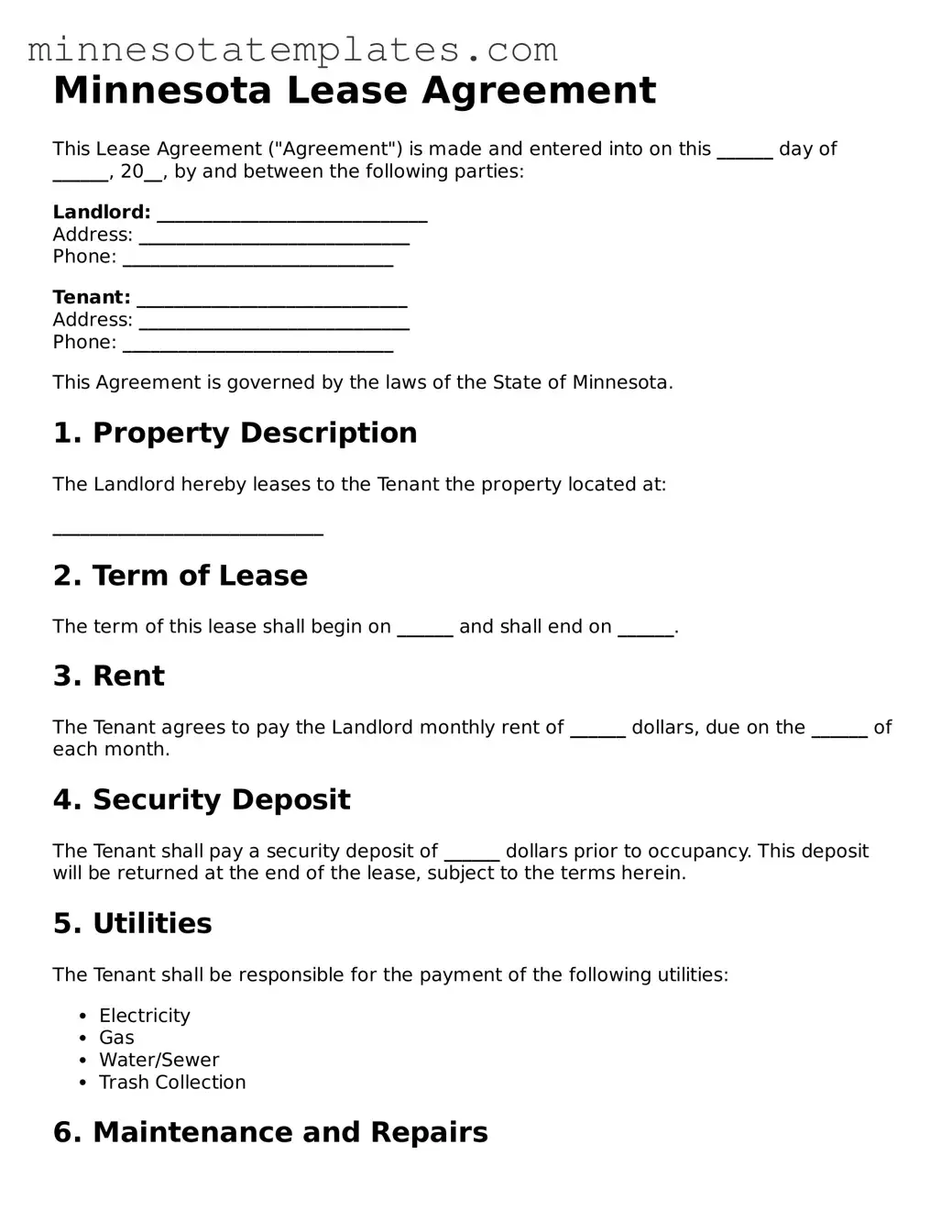Valid Lease Agreement Form for the State of Minnesota
The Minnesota Lease Agreement form is a legal document that outlines the terms and conditions between a landlord and a tenant regarding the rental of residential property. This agreement serves to protect the rights of both parties and ensures clarity in the rental arrangement. Understanding this form is essential for anyone looking to rent or lease property in Minnesota, so take the first step by filling out the form below.
Access Your Form Now
